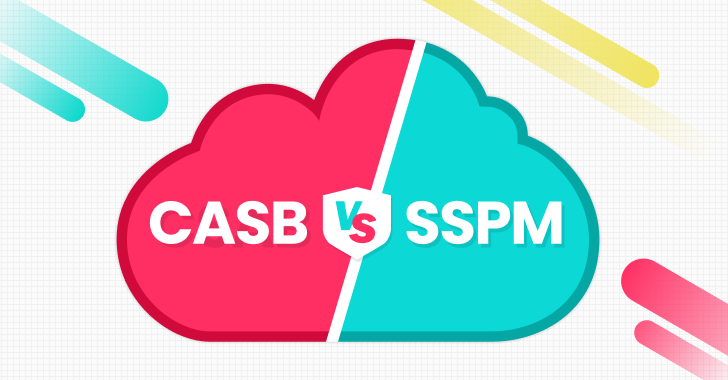CASBs and SSPM are complementary solutions that focus on different aspects of SaaS data security. CASBs apply corporate policies relating primarily to identity, permissions, and data encryption while SSPM protects data from each individual SaaS app based on the usage and settings within each application including identity, permissions, data encryption, and much more.
What is CASB?
CASBs have been around for over a decade, continually adapting to meet the needs of cloud and SaaS security. CASBs focus on applying corporate policies to cloud-based entities, and have a wide range of uses.
Traditional CASBs act like a firewall, where all connectivity to SaaS applications passes through a CASB proxy server where it is monitored and all actions are approved. Next gen CASBs connect to SaaS apps through APIs, giving them more access and increasing their SaaS monitoring functionality.
CASBs enable organizations to apply policy across all corporate users, covering things like password rules, SSOs, and permissions, as well as monitoring and applying the way data moves from place to place.
How Does CASB compare to SSPM?
In contrast to CASB’s ability to apply broad corporate policies across all applications, SSPM secures the configurations of each individual application. CASBs function as a broker, viewing the SaaS application from the outside. They track information and users as they access select SaaS applications. SSPMs, in contrast, survey the landscape from within the entire SaaS stack, with protections customized for each application.
This is an important distinction. Salesforce, which is used by the sales team, and Workday, which is used by the HR team, are both SaaS applications but are used by different teams in different ways. The developers of each application also used different languages and strategies while designing security features for each application. Applying a one-size-fits-all CASB-like policy to address security concerns of these two applications simply wouldn’t work. It requires the delicate, individualized touch only an SSPM can provide.
SSPM provides full visibility into business-critical SaaS applications and enables the security team to gain control of every security element. From maintaining continuous hygiene of all security controls to detecting threats within the SaaS ecosystem, SSPMs enable the management and response to any configuration drift or threat.
SSPMs enable organizations to maintain a high SaaS security posture. It checks for misconfigurations, connected third-party applications, identity and access governance, and monitors user devices and their hygiene score. CASBs, however, can only manage some misconfigurations that relate to identity management, permission scopes, and data encryption. CASBs also lack the visibility needed to see third-party applications that are integrated into the SaaS stack.
SSPMs are also capable of threat detection stemming from misconfigurations, third-party applications, and vulnerable user devices in real time.
SSPMs also allow organizations to respond to threats and configuration drifts in real time to mitigate risk. They provide remediation steps, alerts, and ticket creation to help security teams protect SaaS data.
SSPMs and CASBs Complement Each Other
SSPMs and CASBs do have some overlap between them, but the two solutions complement each other. Both are part of a rich, cloud security fabric necessary to protect sensitive data. CASBs focus on applying corporate policies relating to identity, permissions, and encryption. SSPMs complement those efforts by protecting the data and securing access within the individual SaaS application based on usage and configuration settings.
CASBs are proxy-based solutions. They inspect traffic, as well as identify malicious activity and data exfiltration from an in-line perspective of a governed user. SSPMs extend that coverage to external users, contractors, partners, third-party applications, and IoT devices.
CASBs are effective at detecting users who access more data than they should or access data that they should not be seeing. SSPMs add additional protection by identifying misconfigurations that could lead to data becoming publicly accessible without user registration or user creation.
SSPMs are significantly less expensive than CASBs and have a far simpler setup, allowing organizations to protect their entire SaaS stack rather than just a few critical applications. Furthermore, SSPMs can identify non-IdP users that sit outside the organization, and identify user devices with poor security hygiene, capabilities that complete CASB.



















